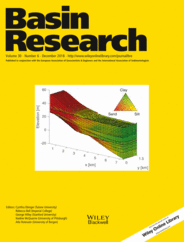
Full text loading...
A new dimension has recently been added to provenance analysis by the rapid development of detrital‐geochronology techniques. The application of any dating method to sediments allows the definition of a unique age pattern of parent rocks, a “time structure” that represents an essential complement to the information on their lithological structure obtained by traditional petrographic and mineralogical methods. This detrital‐geochronology study illustrates the distribution of U‐Pb zircon ages in all parts of the Nile catchment from its equatorial headwaters to the Delta, and surveys how the provenance signal is formed, transmitted, and modified along this huge sediment‐routing system. Age‐spectra obtained by targeting specific parts of zircon grains after cathodo‐luminesce imaging and by our Automated Phase Mapping + LAICPMS “blind‐dating strategy” were compared. The former approach emphasises specific magmatic or metamorphic events in source areas, whereas the latter aims at minimising selection bias and focuses on consistency among samples. Grain‐size and hydraulic‐sorting controls were also checked, but found to have only a minor effect on zircon‐age distributions. The trimodal age spectrum of Kagera zircons sourced from the rift highlands of Burundi and Rwanda, characterised by prominent late Neoarchean (Aruan) and mid‐Mesoproterozoic (Kibaran) peaks with a wider mid‐Palaeoproterozoic (Ubendian) cluster, is lost in the Lake Victoria sediment sink. The sharp unimodal Aruan peak displayed by zircon grains in both Victoria and Albert Nile is supplemented and finally superseded by Neoproterozoic grains across the vast marshlands of South Sudan, where detritus produced in equatorial regions is eventually stored. All Nile tributaries in Sudan and Egypt carry zircon grains yielding predominantly Neoproterozoic ages, with a major peak around 0.6 Ga associated with clusters around 0.8 and 1.0 Ga. A few Oligocene zircons represent the key diagnostic feature of Ethiopian provenance, the Ariadne's golden thread that allowed retracing the palaeo‐Nile to its Ethiopian sources back in the Oligocene. The Nile presents a text‐book case of discontinuous transmission of provenance signals along a segmented ultra‐long drainage system. Zircon‐age fingerprints as well as all other detrital signatures are lost repeatedly in large Ugandan lakes, reconstituted or replaced, lost again in the vast marshlands of South Sudan, and finally homogenised downstream from Ethiopia and Sudan to the Mediterranean Sea.

Article metrics loading...

Full text loading...
References


Data & Media loading...
Supplements

